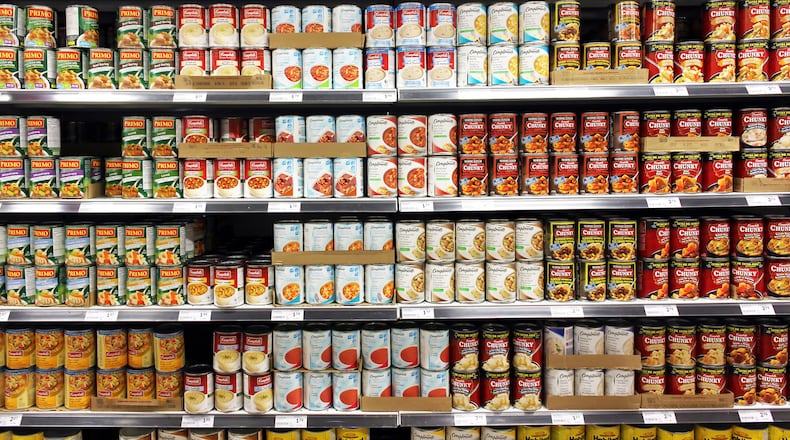Take me out to the ballgame but hold the hot dogs and Cracker Jacks?
Researchers say studies show such sugary, salty, and other processed foods are leading to vascular damage in the brain. And that, in turn, can cause strokes and dementia. The fact that Georgia sits squarely in the middle of what is known as the U.S. “Stroke Belt” is a cause for alarm.
One of the studies, presented at the Alzheimer’s Association International Conference in Philadelphia last month, said that eating about two servings per week of processed red meat raises the risk of dementia by 14% compared to those who eat less than approximately three servings a month.
But the researchers, who looked at more than 130,000 people over a span of 43 years, also found that swapping a serving of processed red meat for a serving of nuts, beans, or tofu every day may lower the risk of dementia by 20%.
Past studies have shown that frequently consuming red and processed meat increases the risk of developing colorectal cancer.
The link to dementia doesn’t surprise Dr. Fadi Nahab, Associate Professor of Neurology and Pediatrics at Emory University.
“Processed meats use salt as a preservative and dietary salt consumption is associated with high blood pressure, the number one risk factor for stroke,” Nahab said. “Additionally, processed meats are broken down by our gut bacteria into chemical byproducts that increase stroke risk.”
Processed meats includes hot dogs, bacon, ham, sausages, corned beef, beef jerky as well as canned meat and meat-based preparations like frozen beef Bolognese.
A second study of 837 respondents also presented at the conference, found that total sugar intake may adversely affect cognitive function over time, and may increase risk of Alzheimer’s dementia.
How does this happen? Nahab said high blood sugar damages the brain’s blood vessels leading to cholesterol plaque buildup and an increased risk of clotting activity. This causes reduced blood flow throughout the brain, damaging nerve cells and their ability to function properly. Diabetic patients are twice as likely to develop dementia compared to those without diabetes, and the risk is significantly higher for Type 1 diabetics. Type 1 diabetics are often diagnosed in childhood and the condition means their pancreas does not make insulin.
A third study by Puja Agarwal of Rush University Medical Center in Chicago came to the same conclusion. Agarwal’s team found that simple sugars like fructose and sucrose are associated with higher dementia risk. Fructose is found in sweetened beverages, snacks, packaged desserts. Sucrose, or table sugar, is a bedrock ingredient in juices, desserts, candies, and commercial cereals.
“Most of the ultra processed foods are high in sugar, fat, salt, and other additives — so that’s how this connects to stroke risk,” Agarwal said. “The literature definitely shows a connection between poor diet, stroke and memory loss.”
Not all sugars are harmful, and diets that include natural sugars found in fruits, vegetables, and dairy products have been shown to lower stroke risk, said Desiree Wanders, Associate Professor and Chair of the Department of Nutrition at Georgia State University.
She says educating the public on how to lower stroke risk by increasing fiber and cutting sugar could be a key part of any programs to bring down mortality in the six-state region known as the Stroke Belt. But more action is needed, she emphasized. “Without changes to the food system to lower sodium levels in food, widespread reductions in sodium intake are unlikely,” Wanders said.
Credit: Barry Williams
Credit: Barry Williams
Given that dementia risk may nearly triple in the first year after a stroke, according to Canadian researchers, experts in Atlanta are thinking of ways to reduce stroke rates to prevent strain on the state’s dementia care system.
What is the Stroke Belt?
The Southeast is often referred to as the Stroke Belt due to the elevated stroke death rates observed in Alabama, Georgia, Louisiana, Mississippi, North Carolina, and South Carolina, according to the University of Alabama at Birmingham. “Historically, stroke mortality rates in this area have been roughly 30% higher than the national average, with the ‘Stroke Belt buckle’ – North Carolina, South Carolina, and Georgia – experiencing about 40% higher rates,” Wanders said.
Though other Southeastern states have high rates of stoke as well, a decades-long study called REGARDS (Reasons for Geographic and Racial Differences in Stroke) focused on North Carolina, South Carolina, Georgia, Tennessee, Alabama, Mississippi and Arkansas, and Louisiana.
Higher prevalence of high blood pressure, diabetes, and inflammation, along with lower socioeconomic status, contribute to the increased incidence and mortality from stroke in the Stroke Belt versus other regions, Nahab from Emory added.
According to the Centers for Disease Control and Prevention (CDC), Mississippi, Alabama, Arkansas, Louisiana, and Georgia have the nation’s highest morality rates from Alzheimer’s.
Credit: TNS
Credit: TNS
Although there are many kinds of dementia, Alzheimer’s disease is by far the most common at 60–70% of cases, according to the World Health Organization (WHO).
More than 188,000 Georgia residents aged 65 or older had Alzheimer’s disease in 2020, according to the Alzheimer’s Association. That number represents about 12% of the state’s population in that age group, and is likely to increase as the state faces a growing population of seniors and a shortfall of doctors to treat them, The Atlanta Journal-Constitution reported.
Dr. Parth Sheth, a neurohospitalist at Piedmont Hospital in Atlanta, said inability to access healthy food and lower socioeconomic status weigh on his patients’ health. He says some of his patients might simply not be able to afford healthier, lower salt, lower sugar unprocessed foods.
“With the rise in cost of food, we are seeing patients buy what they can,” Sheth said. “That’s often processed foods, which are high in salt, and which can lead to stroke and heart attacks.”
But he’s optimistic, he said, because when his patients can switch to the Mediterranean Diet or the DASH Diet, both of which involve eating increased amounts of costlier, fresh produce, “they do remarkably well.”
How to lower salt and sugar
For those looking to switch to a healthier diet, the American Heart Association’s “Life’s Essential 8″ could be a place to start. The program focuses on improving dietary habits to include whole foods, fish, beans, nuts, fruits and vegetables while limiting sweet drinks, alcohol and red meats, increasing cardiovascular exercise to at least 150 minutes per week, quitting tobacco products, getting eight-to-nine hours of sleep each night, managing weight, controlling cholesterol, blood sugar and blood pressure.
Still, interventions aimed specifically at targeting stroke prevention through diet and other lifestyle improvements in the Southeast remain limited, said Dawn M. Aycock of the Byrdine F. Lewis College of Nursing & Health Professions at Georgia State University.
To address the shortfall, Aycock created a community-based intervention called SCORRE and educational videos aimed at increasing awareness of stroke and reducing stroke risk among young African American adults in Georgia.
In the “Stroke Belt” and “Stroke Buckle” states of the Southeast, stoke death is about 50% higher regardless of race, according to a study by researchers at the University of Vermont and the University of Alabama at Birmingham.
SCORRE (Stroke Counseling for Risk Reduction) is an eight-week program of individualized risk reduction counseling, self-monitoring of diet and physical activity, and associated text messages with tips for lowering stroke risk.
The program has led to improvements in diet, though Aycock said it’s not enrolling participants at this time as funding has ended.
Moreover, she doesn’t think educational outreach alone is enough to address this public health issue.
“We also need comprehensive programs and policies to enhance access to, affordability of, and marketing of healthy foods, primarily for racial and ethnic minorities and individuals living in poor socioeconomic and rural areas in the Southeast, as they bear the greatest burden of stroke,” she said.
Over 22% of rural Georgians live in food deserts, according to a Mercer University report presented to the Georgia Senate, and 28% percent of Georgians are classified as both low income and as having low food access. The U.S. Department of Agriculture (USDA) defines a food desert as regions of the country that feature large proportions of households with low incomes, inadequate access to transportation, and a limited number of food retailers providing fresh produce and healthy groceries for affordable prices.
Nahab of Emory said too many Georgians living in such regions rely on processed foods high in fat, sugar, and salt that drive up stroke and dementia risk.
“Policy changes are needed to expand subsidies for foods such as fruits and vegetables making them more affordable and easily accessible,” he said.
About the Author
Keep Reading
The Latest
Featured





